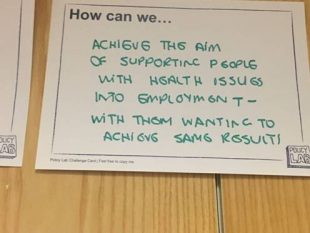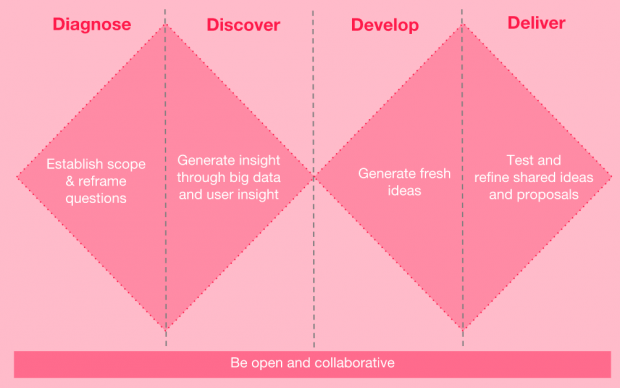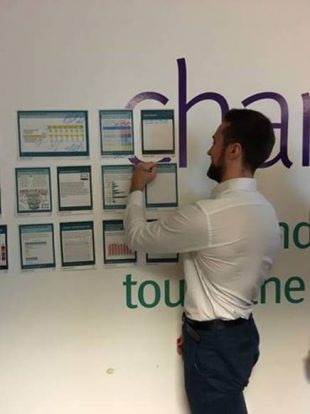We promised we’d do more to tell the stories of our projects, wherever possible. This is from Sam, a faststreamer who worked on an ongoing project with the Department for Work & Pensions (DWP). Our 'Positive Engagement' project looks at how to improve support for people with long-term health conditions and disabilities, so they can be helped to return to work.
Sam’s story of his personal commitment to people-centred approaches and his experience of the project discovery stage follows. We will be back with updates on the ethnography and co-design so you can judge whether Sam’s expectations were met!
Sam’s story
My team in DWP were given the huge responsibility of making sure that people with health conditions and disabilities had a better experience of engaging with job centre services. The evidence suggested voluntarily accessing employment support was having positive effects. But we wanted to know how we could build on this success and create more meaningful engagement with better outcomes for everyone. What were the improvements we could make across the system?
 As a relative newcomer, it was great to be involved in such early stage policy-making. My previous career as a teacher in south-east London had given me first-hand experience of how the impact of new policy could be undermined by a lack of awareness of frontline reality. This disconnect was part of what drove me to bring my experience to central government.
As a relative newcomer, it was great to be involved in such early stage policy-making. My previous career as a teacher in south-east London had given me first-hand experience of how the impact of new policy could be undermined by a lack of awareness of frontline reality. This disconnect was part of what drove me to bring my experience to central government.
So Policy Lab’s focus on the citizen was particularly encouraging. Getting people who are affected by your policy involved from the start - for example through understanding their real lives using ethnographic methods - gives us insights that are impossible to make from a distance.
The project began with a two-hour ‘Lab Light,’ where we agreed our scope – the diagnose phase of the double-diamond methodology. We started in classic Lab style with hopes and fears which highlighted everyone’s shared commitment to improve experiences of both frontline staff and the people that use our services.

Because we had practitioners in the room alongside policy-makers, we had a very open and honest conversation which helped us get an early sense of what might be stopping effective engagement. And it allowed us to identify the types of people who it would be most interesting to find out more about - the focus of our research.
 These conversations helped us prepare for the two-day sprint - another key component of the Lab approach. There, we brought together policy makers from across government with designers, researchers and frontline staff. We started out with an ‘evidence safari’ - a great way to get everyone in the room to understand the key policy challenges quickly (and memorably). We were able to identify the gaps in our understanding, and to build on extensive knowledge the department had already accumulated.
These conversations helped us prepare for the two-day sprint - another key component of the Lab approach. There, we brought together policy makers from across government with designers, researchers and frontline staff. We started out with an ‘evidence safari’ - a great way to get everyone in the room to understand the key policy challenges quickly (and memorably). We were able to identify the gaps in our understanding, and to build on extensive knowledge the department had already accumulated.
On day 2 we focused on preparation for our ethnographic research and we essentially wrote the brief together, finalising the list of participants we were looking for, so Policy Lab could go out immediately to find them.
 Of course, this was just the start. But so far I’ve seen huge value from this approach which I have taken with me into my next posting in BEIS. Not only did it allow us to engage with a range of colleagues and stakeholders, but it has led us to think critically about each stage of the policy development process.
Of course, this was just the start. But so far I’ve seen huge value from this approach which I have taken with me into my next posting in BEIS. Not only did it allow us to engage with a range of colleagues and stakeholders, but it has led us to think critically about each stage of the policy development process.
I’m looking forward to seeing the findings from the ethnography, and of course, the new ideas we hope will emerge from the co-design. Watch this space for updates from the team.
Leave a comment